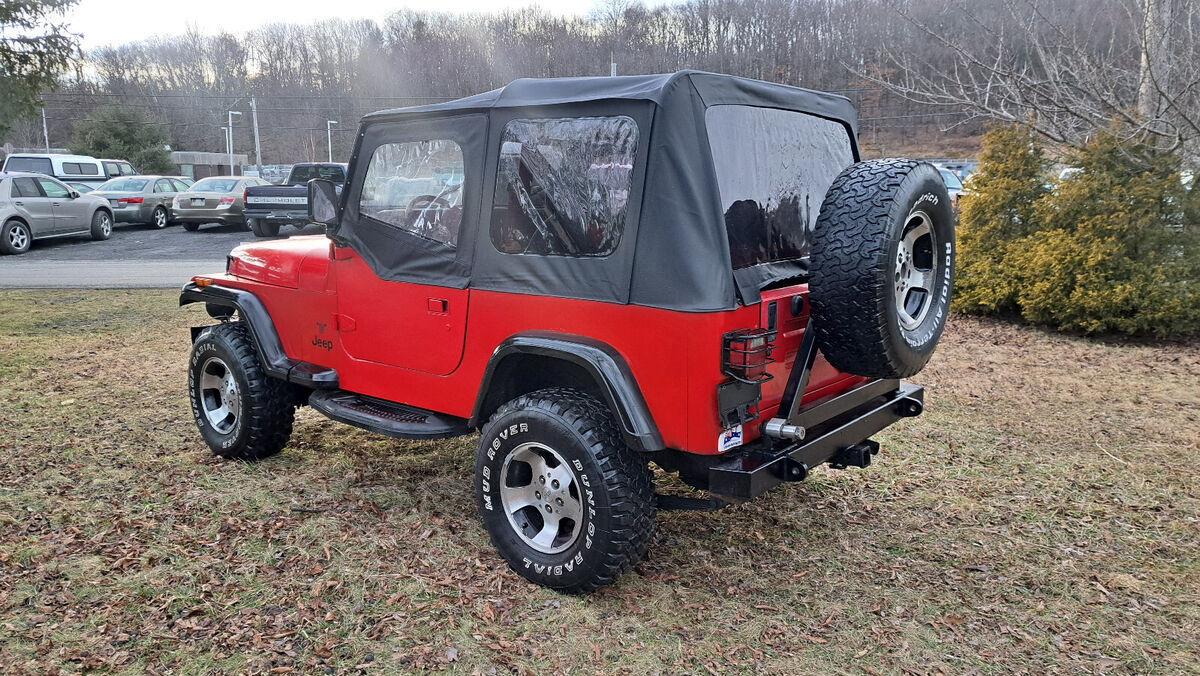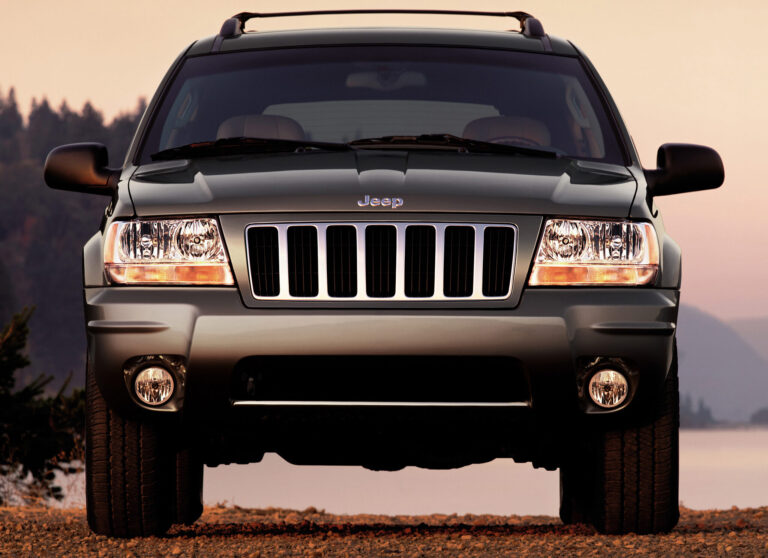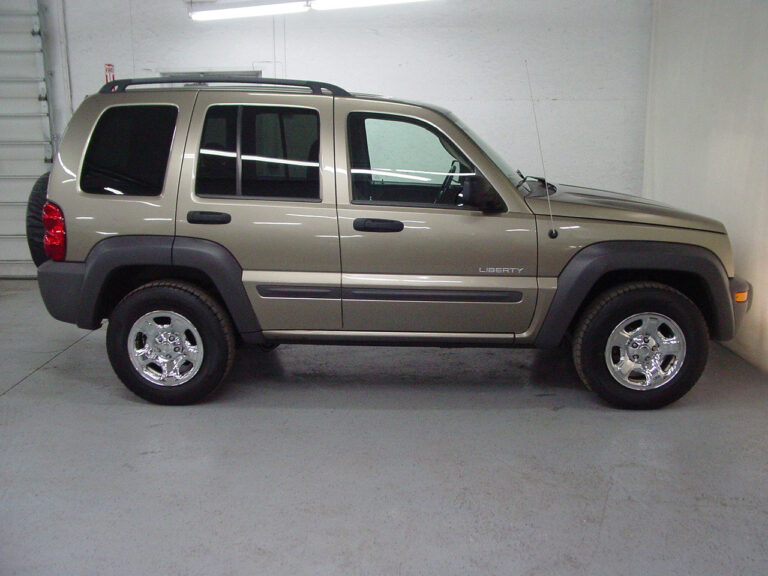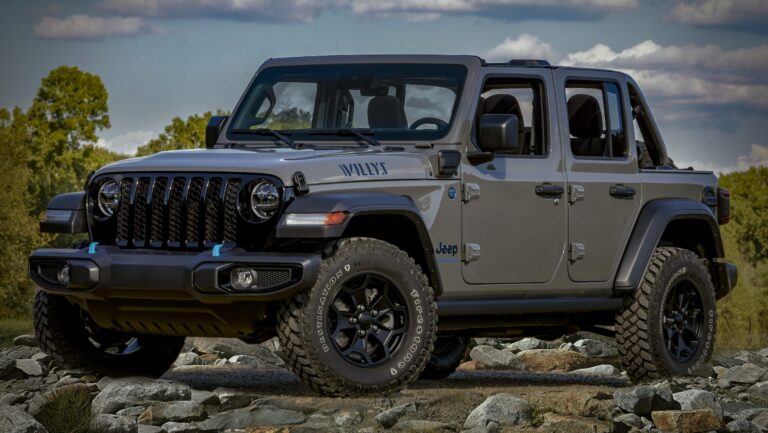1989 Jeep Wrangler 4.2 Engine For Sale: A Comprehensive Guide for Enthusiasts
1989 Jeep Wrangler 4.2 Engine For Sale: A Comprehensive Guide for Enthusiasts jeeps.truckstrend.com
The 1989 Jeep Wrangler YJ, with its distinctive square headlights, holds a special place in the hearts of off-road enthusiasts and classic vehicle collectors alike. At the core of many of these iconic machines lies the robust and reliable 4.2-liter (258 cubic inch) inline-six engine. This engine, known for its ample low-end torque and legendary durability, is often the very reason these Jeeps continue to conquer trails decades after rolling off the assembly line.
However, like any mechanical component, even the most bulletproof engines can eventually wear out or suffer catastrophic failure. When faced with a ailing heart in your beloved YJ, the search for a "1989 Jeep Wrangler 4.2 Engine For Sale" becomes a critical mission. This article serves as a comprehensive guide for anyone navigating this search, offering insights into what to look for, where to find it, and what considerations are paramount to ensure a successful purchase and revival of your classic Jeep.
1989 Jeep Wrangler 4.2 Engine For Sale: A Comprehensive Guide for Enthusiasts
The Heart of the YJ: Understanding the 4.2L (258 CID) Engine
The AMC 258 cubic inch (4.2-liter) inline-six engine is a legendary powerplant, a direct descendant of the venerable AMC 232. Introduced in 1971 and used extensively across Jeep models until 1990, it became the standard engine for the YJ Wrangler from its inception in 1987 through 1990. In its 1989 iteration, it typically featured a Carter BBD two-barrel carburetor, offering a balance of power (around 112-117 horsepower) and, more importantly, a healthy dose of torque (around 210 lb-ft) at low RPMs.
Why is it sought after?
- Torque: Its long stroke design delivers excellent low-end torque, essential for rock crawling and off-road maneuvering.
- Simplicity: Being carbureted and mechanically straightforward, it’s relatively easy to diagnose and repair, appealing to DIY enthusiasts.
- Durability: Many original 258 engines have clocked hundreds of thousands of miles, a testament to their robust construction.
- Parts Availability: Given its long production run and widespread use, parts for the 258 are still readily available, from gaskets to full rebuild kits.
- Modification Potential: While simple in stock form, it’s a popular candidate for upgrades like fuel injection conversions (e.g., Mopar MPI, Howell, affordable aftermarket kits) to improve reliability, fuel economy, and cold starts.

For a 1989 Jeep Wrangler owner, finding another 4.2L engine isn’t just about replacing a part; it’s about preserving the original character and capability of the vehicle.
Why Are You Looking for a 1989 Jeep Wrangler 4.2L Engine? Common Scenarios
Understanding your specific need for a 4.2L engine will guide your search and decision-making process.

- Direct Replacement for a Failing Original: This is the most common scenario. Your existing engine might have suffered a rod knock, catastrophic overheating, a cracked block, or simply reached the end of its serviceable life with excessive oil consumption or low compression.
- Restoration Project: If you’re undertaking a full frame-off restoration of a 1989 YJ, finding a good, solid engine (or one suitable for a complete rebuild) is paramount to authenticity and performance.
- Engine Swap/Upgrade (from a 4-cylinder): While less common for a 4.2L YJ, some owners of 4-cylinder YJs might consider swapping in a 4.2L for more power and torque. However, this often involves significant modifications beyond just the engine.
- Building a Custom Rig: Some custom builders might start with a 4.2L engine due to its reliability and adaptability, even if it’s going into a different chassis or a highly modified setup.

Types of 1989 Jeep Wrangler 4.2L Engines Available for Sale
The market for replacement engines offers several categories, each with its own advantages, disadvantages, and price point.
- Used/Salvage Engines:
- Description: These are engines pulled directly from donor vehicles, often from junkyards, private sellers, or auto recyclers. Their condition can vary wildly.
- Pros: Cheapest option, immediate availability.
- Cons: Unknown history (mileage, maintenance, last running condition), no warranty or very limited warranty, may require significant work (gaskets, seals, tune-up) before installation. High risk.
- Rebuilt Engines:
- Description: A used engine that has been disassembled, inspected, and had worn components (bearings, piston rings, gaskets, seals) replaced. The block and head are usually cleaned and machined as needed.
- Pros: Better reliability than a used engine, often comes with a limited warranty (e.g., 90 days to 1 year), generally more affordable than remanufactured.
- Cons: Quality varies significantly depending on the rebuilder’s expertise and the parts used. May not include all accessories.
- Remanufactured Engines:
- Description: The most comprehensive and highest quality option. These engines are completely disassembled, all components are inspected to OEM specifications, and worn parts are replaced with new or re-machined parts. Critical components like crankshafts, connecting rods, and cylinder heads are often re-machined or replaced to meet strict tolerances. They are tested extensively.
- Pros: Closest to a new engine, comes with a substantial warranty (e.g., 1-3 years), higher reliability, often includes new or reconditioned accessories (carburetor, distributor).
- Cons: Most expensive option.
The Search Process: Where to Find a 1989 Jeep Wrangler 4.2L Engine
Finding the right engine requires a multi-pronged approach:
- Online Marketplaces:
- eBay: Good for both used and rebuilt/remanufactured engines from various sellers. Use specific search terms like "1989 Jeep Wrangler 4.2L engine" or "AMC 258 engine." Pay close attention to seller ratings and shipping costs.
- Craigslist/Facebook Marketplace: Excellent for finding local used engines from private sellers or smaller shops. Allows for in-person inspection. Be wary of scams.
- Specialized Jeep Forums and Enthusiast Groups: Websites like JeepForum.com, WranglerForum.com, or dedicated Facebook groups for YJ owners often have "for sale" sections where members sell parts, including engines. This is a great way to find parts from fellow enthusiasts who understand the value.
- Auto Salvage Yards/Junkyards: A traditional source for used engines. Call ahead to inquire about availability. Be prepared to inspect the engine thoroughly on-site.
- Engine Rebuilders/Suppliers: Many companies specialize in rebuilding and remanufacturing engines. A quick online search for "AMC 258 remanufactured engine" or "Jeep 4.2L engine rebuilder" will yield results. These are often the best source for warrantied, higher-quality options.
- Local Mechanics/Jeep Specialty Shops: Your local trusted mechanic, especially one who works on older Jeeps, might know of engines for sale or have connections to local rebuilders.
Crucial Considerations Before Buying
Purchasing an engine is a significant investment. Thorough due diligence is essential.
- Condition Assessment (for Used Engines):
- Visual Inspection: Look for cracks in the block or head, signs of severe overheating (discolored paint, warped components), oil leaks, or excessive rust.
- Oil Condition: Check the dipstick. Milky oil indicates coolant contamination (blown head gasket, cracked block). Very dark, sludgy oil suggests poor maintenance.
- Compression Test: If possible, perform a compression test (even a dry one). Low or uneven compression across cylinders is a major red flag.
- Internal Noises (if running): Listen for knocks, ticks, or unusual sounds that indicate internal wear.
- Accessories: Are the carburetor, distributor, exhaust manifold, water pump, power steering pump, and alternator included? What condition are they in?
- Mileage and History: For used engines, inquire about the donor vehicle’s mileage and any known service history. While often hard to verify, any information is better than none.
- Completeness: Understand what you’re buying:
- Long Block: Typically includes the block, crankshaft, pistons, connecting rods, camshaft, and cylinder head(s).
- Short Block: Just the block, crankshaft, pistons, and connecting rods.
- Complete Engine: Includes a long block plus intake/exhaust manifolds, carburetor, distributor, oil pan, valve cover, and sometimes accessories like the alternator, power steering pump, and A/C compressor.
- A more complete engine might save you money on individual parts later, but it will be heavier and more expensive to ship.
- Compatibility: Ensure it is indeed a 1989-era 4.2L engine. While the 258 was largely consistent, minor variations in accessory mounts or specific sensors might exist across years. For a direct swap, a 1987-1990 YJ 4.2L engine is ideal.
- Warranty: This is critical, especially for rebuilt or remanufactured engines. Understand the terms, duration, and what it covers (parts, labor, shipping). A reputable seller will offer a warranty.
- Shipping and Logistics: Engines are heavy. Get clear quotes on shipping costs and ensure the seller packages the engine securely (crated, strapped to a pallet). Consider freight shipping insurance.
- Seller Reputation: Check reviews, ask for references, and communicate thoroughly with the seller. Avoid deals that seem too good to be true.
Installation and Post-Purchase Tips
Once you’ve secured your 1989 Jeep Wrangler 4.2L engine, the next steps are crucial for a smooth revival.
- Pre-Installation Checks: Even with a rebuilt or remanufactured engine, it’s wise to replace common wear items like the rear main seal, oil pan gasket, valve cover gasket, and spark plugs before installation. Consider replacing the water pump, thermostat, and all hoses if they weren’t part of the engine package.
- Professional Installation vs. DIY: While the 258 is relatively simple, engine swaps are complex. If you’re not an experienced mechanic, consider professional installation to ensure proper alignment, connections, and initial startup.
- Break-in Procedure: If you bought a rebuilt or remanufactured engine, follow the manufacturer’s specific break-in procedure religiously. This typically involves varied RPMs, avoiding heavy loads, and an early oil change to seat new rings and bearings properly.
- Associated Parts: Plan to replace or inspect engine mounts, clutch assembly (if manual), radiator, fan clutch, and all belts. Ensure your carburetor is clean and properly tuned, or consider an upgrade to fuel injection for improved performance and reliability.
Potential Challenges and Solutions
- Finding a Good Condition Engine: Good used 258s are becoming rarer. Be patient, expand your search radius, and be prepared to pay more for a verified, lower-mileage unit.
- Shipping Damage: Insist on proper crating and shipping insurance. Document any damage immediately upon arrival with photos.
- Post-Installation Issues: Carburetor tuning, vacuum leaks, and electrical gremlins are common after an engine swap. Take your time, consult service manuals, and don’t hesitate to seek professional help for persistent issues.
- Cost vs. Value: While a new engine is an investment, consider the overall value of your Jeep. A well-maintained 1989 YJ can hold its value, and a strong engine is key to its desirability. Sometimes, investing in a quality remanufactured engine pays off in the long run with fewer headaches.
Price Guide: 1989 Jeep Wrangler 4.2L Engine For Sale
The price of a 1989 Jeep Wrangler 4.2L engine varies significantly based on its condition, completeness, and whether it’s used, rebuilt, or remanufactured. This table provides estimated ranges.
| Engine Type | Condition/Warranty | Estimated Price Range (USD) | Key Considerations |
|---|---|---|---|
| Used/Salvage | "As-Is," pulled from running vehicle (unverified) | $500 – $1,500 | Highest risk; inspect thoroughly; budget for gaskets/seals/tune-up; typically no warranty. Price depends on completeness and perceived condition. |
| Used/Salvage | "As-Is," condition unknown (core value) | $200 – $500 | Primarily for core exchange or a full rebuild; likely seized or significantly damaged. |
| Rebuilt | Limited warranty (90 days – 1 year) | $1,500 – $2,500 | Quality varies by rebuilder; inquire about replaced parts and machining processes; may or may not include accessories. |
| Remanufactured | Comprehensive warranty (1-3 years), tested | $2,500 – $4,500+ | Closest to new; highest reliability; often includes reconditioned accessories; typically from specialized engine suppliers. |
Note on Pricing: These are estimates and can fluctuate based on market demand, location, seller, and included accessories (carburetor, distributor, manifolds, etc.). Always get a detailed quote and understand what is included in the price. Don’t forget to factor in shipping costs, which can be substantial for an engine.
Frequently Asked Questions (FAQ)
Q1: Is it worth replacing the engine in my 1989 YJ, or should I just buy another Jeep?
A1: If your Jeep’s chassis, frame, and body are in good condition, replacing the engine is often more cost-effective than buying another YJ, especially considering the rising prices of classic Jeeps. It also preserves your existing vehicle, which you’re already familiar with.
Q2: Can I upgrade a carbureted 4.2L to fuel injection?
A2: Yes, this is a popular and highly recommended upgrade. Aftermarket kits (like Howell TBI, Mopar MPI, or affordable EFI systems) significantly improve cold starting, fuel economy, reliability, and off-road performance (no carburetor bogging on inclines).
Q3: What’s the typical lifespan of a 4.2L engine?
A3: Well-maintained 4.2L engines can easily last 200,000 to 300,000 miles or more. Regular oil changes, proper cooling system maintenance, and addressing minor issues promptly contribute to its longevity.
Q4: Are parts for the AMC 258 (4.2L) still readily available?
A4: Absolutely. Due to its long production run and popularity, most parts for the 258 are still widely available through auto parts stores, online retailers, and specialty Jeep suppliers.
Q5: What’s the difference between a "rebuilt" and a "remanufactured" engine?
A5: A rebuilt engine typically involves replacing only the worn components (e.g., bearings, rings, gaskets) and machining only if necessary. A remanufactured engine undergoes a more rigorous process where all components are inspected to OEM specifications, many are replaced regardless of apparent wear, and critical components are re-machined or replaced to "new" tolerances. Remanufactured engines generally come with a more extensive warranty and higher quality assurance.
Conclusion
The search for a "1989 Jeep Wrangler 4.2 Engine For Sale" is a journey toward preserving a piece of automotive history and ensuring your YJ continues its adventures. Whether you opt for a budget-friendly used engine, a balanced rebuilt unit, or a top-tier remanufactured powerhouse, thorough research and careful consideration are paramount.
The 4.2L (258 CID) inline-six is a testament to rugged simplicity and durability. With the right replacement engine and proper installation, your 1989 Jeep Wrangler YJ can continue to deliver the iconic off-road performance and classic charm that has made it a beloved classic for decades. Embrace the challenge, enjoy the process, and soon you’ll be back on the trail, feeling the pulse of that legendary AMC 258 once more.





